#thankyou #mcmullan #structuralengineers #structuralengineering #wosb #15years #congratulations
McMullan Project Garners SEA-MW Outstanding Excellence in Structural Engineering Award
On June 26, McMullan’s project for the rehabilitation of the Conococheague Aqueduct was recognized by Structural Engineers Association - Metropolitan Washington’s (SEA-MW) for Outstanding Specialized (Non-building) Structure as part of their annual Excellence in Structural Engineering Awards program. Judging criteria included: creativity of structural design; technical innovations and their influence on design; ingenuity of design for efficient use of material and labor; how the design solved unusual problems; and quality of execution.
Under contract with National Park Service, McMullan was the SEOR for the rehabilitation of this historic aqueduct on the Chesapeake and Ohio Canal in Williamsport, Maryland, which used a combination of historic and modern materials and methods. This water-filled, three-arch stone masonry bridge carried canal boats over the Conococheague Creek from 1835 to 1924. After a canal boat broke through the berm side parapet and fell to the creek below in 1920, it was replaced with a timber floor and wall with outriggers, and the repair served until the aqueduct was permanently closed after two floods in 1924. The existing arches, although damaged by years of flooding, were determined by analysis to be capable of still supporting an aqueduct full of water at a six-foot depth. The modern rehabilitation included repairs to the masonry arches and foundations as well as the existing walls and parapets, construction of a concrete floor and wall with a timber form liner, and installation of timber outriggers to replicate the aqueduct’s 1920s appearance.
A key aspect to this project’s success was McMullan’s extensive pre-design studies of previous parapet failures and arch damages at both Conococheague and other C&O Canal aqueducts to identify failure mechanisms as well as repair or strengthening needs. The probable causes of damages were determined to be a lack of tensile strength transverse to compression in the arch barrel stones, the impact of flood waters on interior rubble stone and mortar fill, and undermining of stone pier and abutment foundations from scouring action of the water. To address the lack of transverse tensile strength, a method of installing stainless steel grouted pins through the arch barrel stones and towpath parapet was developed along with a method of using original stone cores to hide the pins. The original arch barrels were constructed with stones placed in a bonded coursing pattern set on centering formwork. To avoid issues with the arch barrel pins proximity to the edge of the stones, the exact location of each arch barrel pin had to be specified because the arch stone courses varied across the barrel.
Furthermore, and due to the history of flooding from the creek and damage to stones from debris caught in the railing, details for bolted connections of both the steel railings and timber outriggers were developed which allow for the National Park Service to remove sections of each prior to future flood events. At the top of the aqueduct, the watered concrete trough was designed with sufficient stainless-steel reinforcement for crack control and crystalline waterproofing admixtures to provide for a long service life. In addition, the entire concrete trough was designed as a redundant bridging element to span over the arches, especially if there were hidden conditions in the arch barrel stones that affected the arch strength. This bridging element will be activated should there be a loss of stiffness in the arches in the future, enabling the overall rehabilitation design of the aqueduct to withstand further aging.
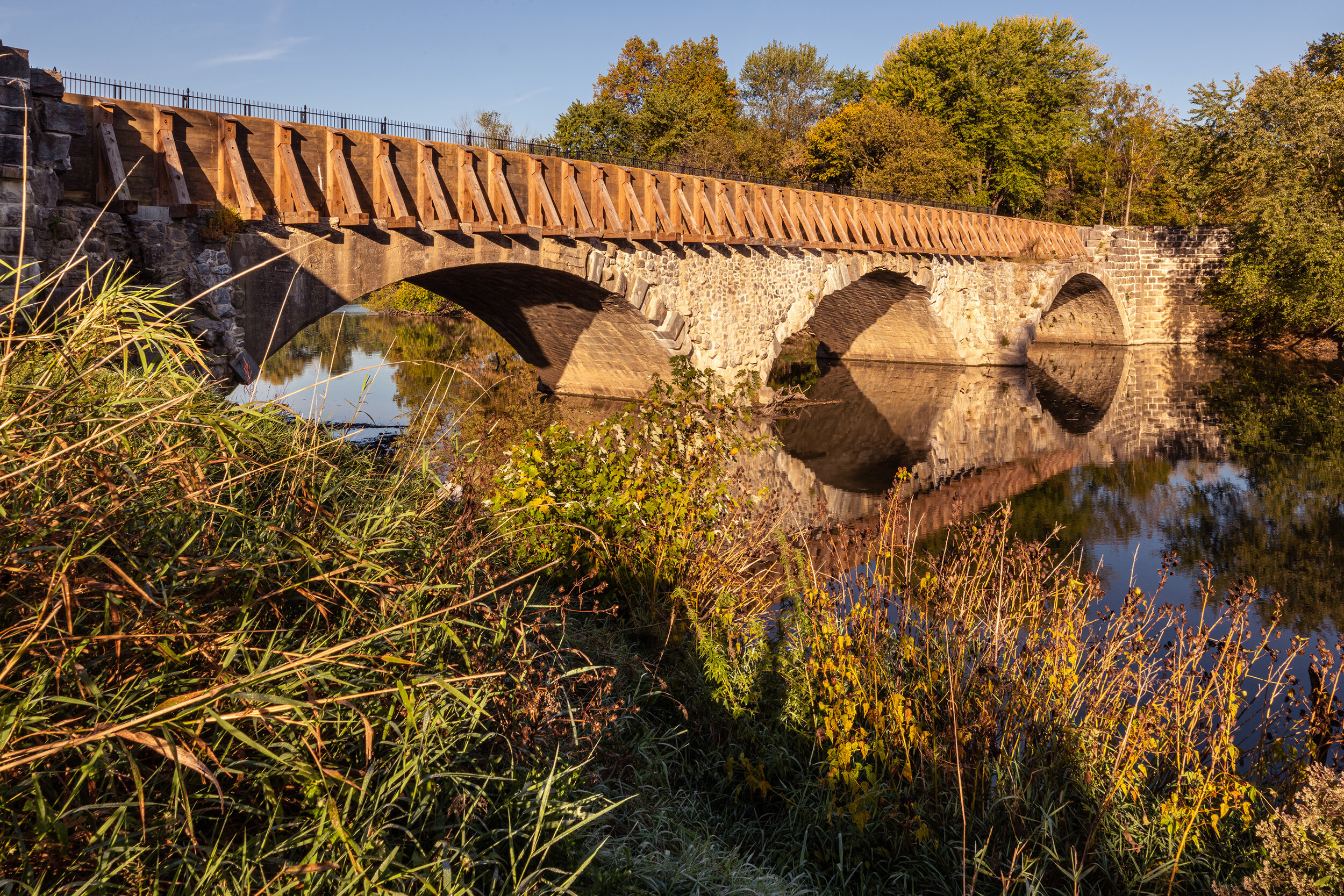
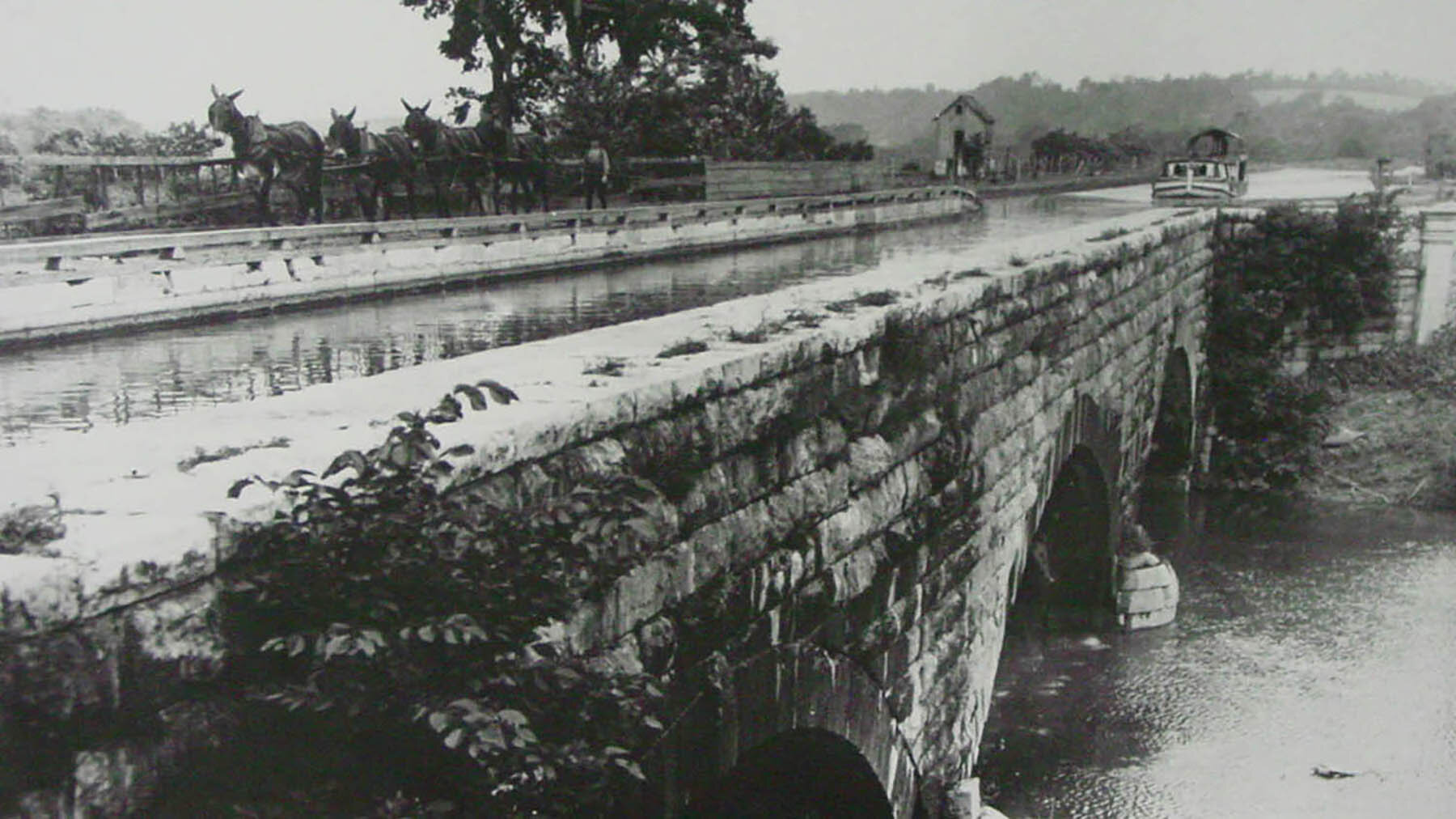

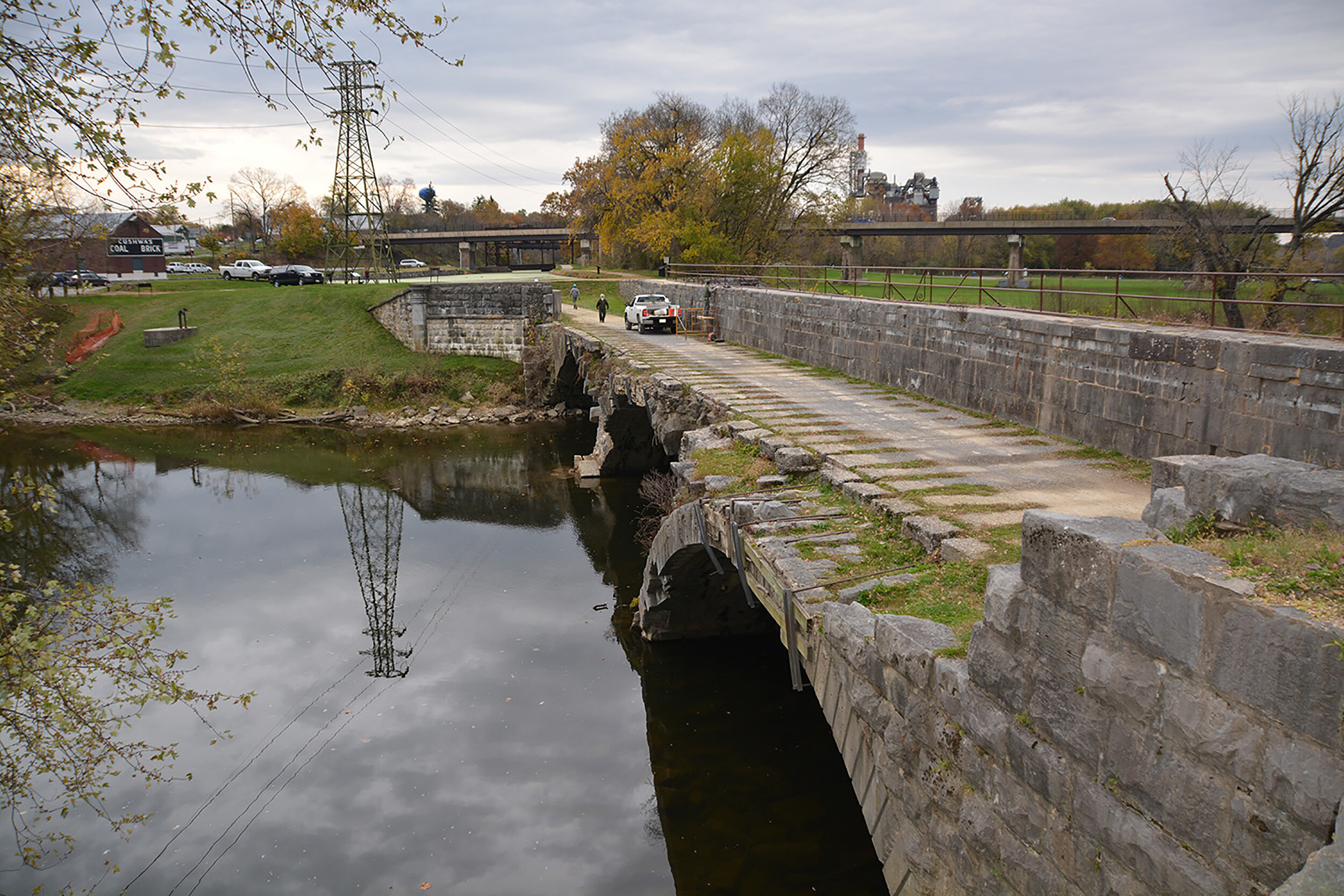


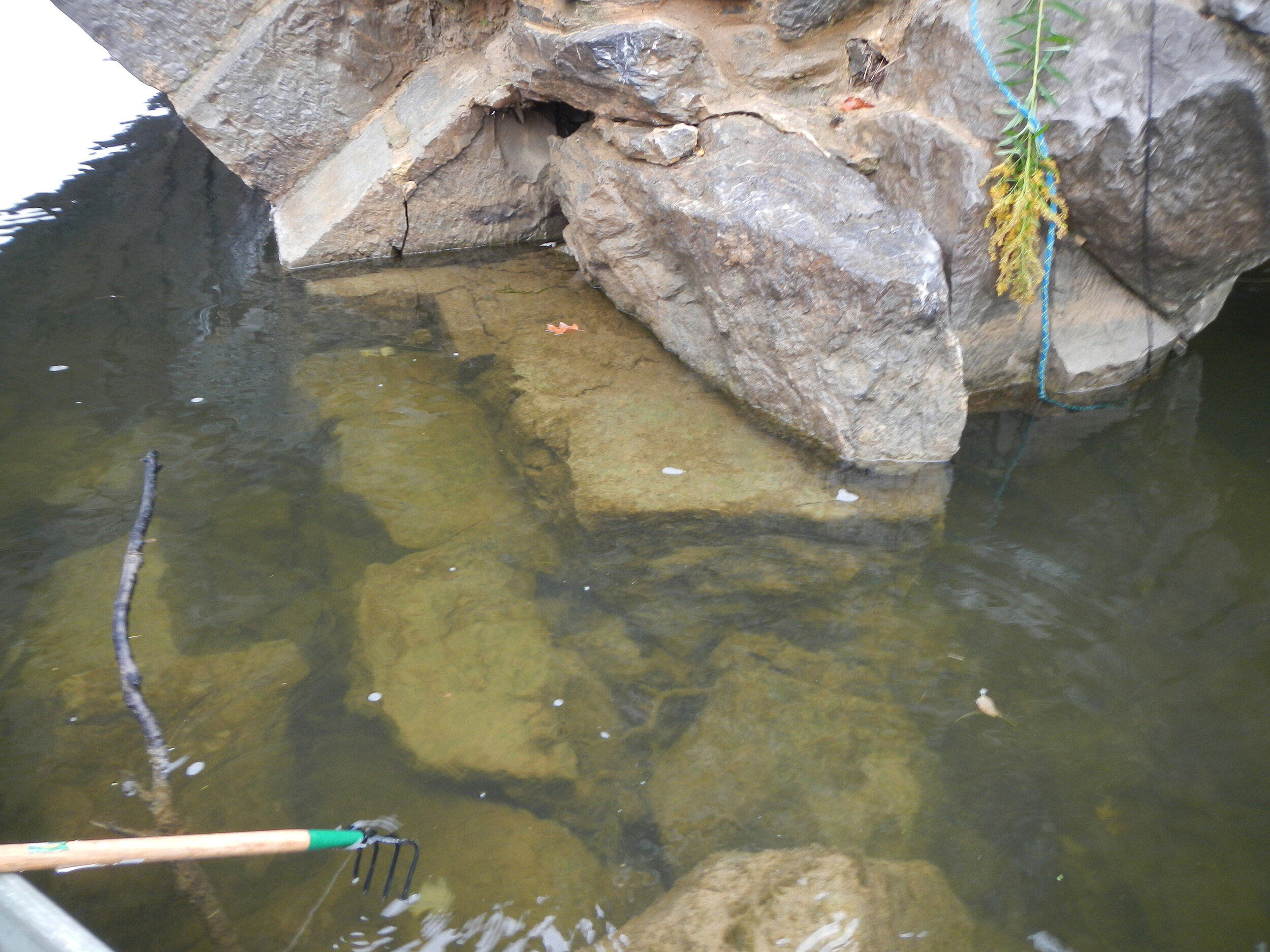
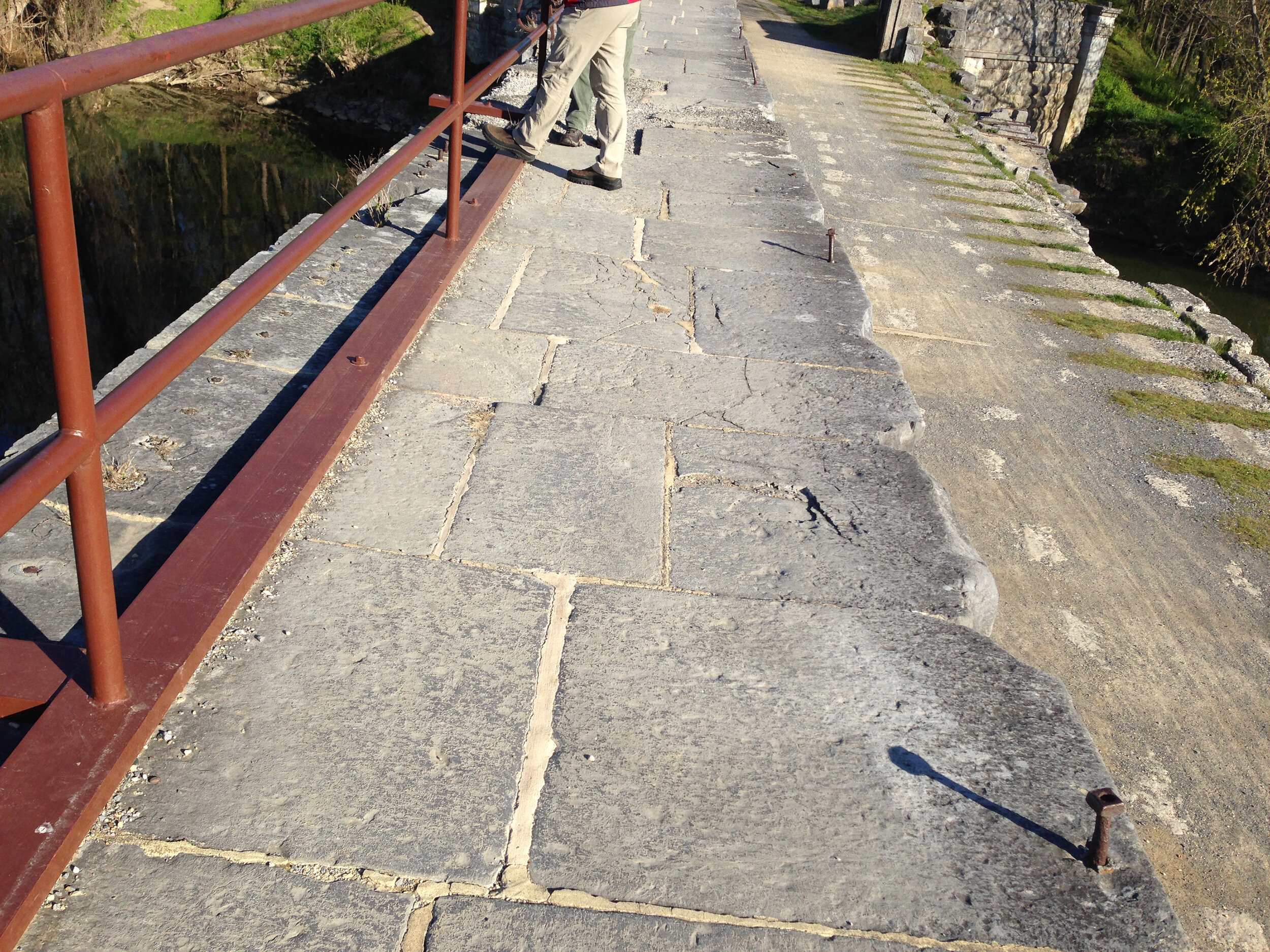
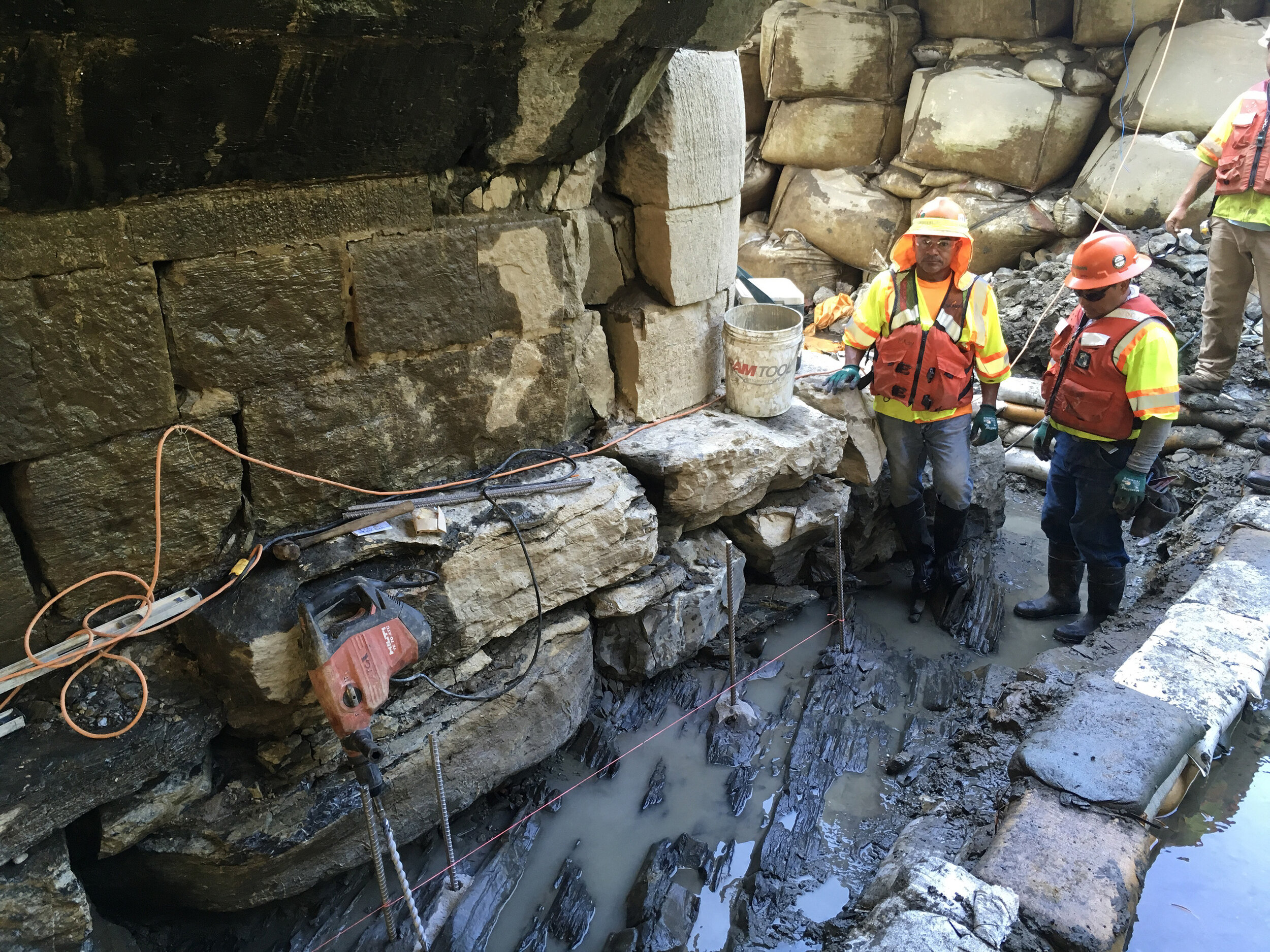
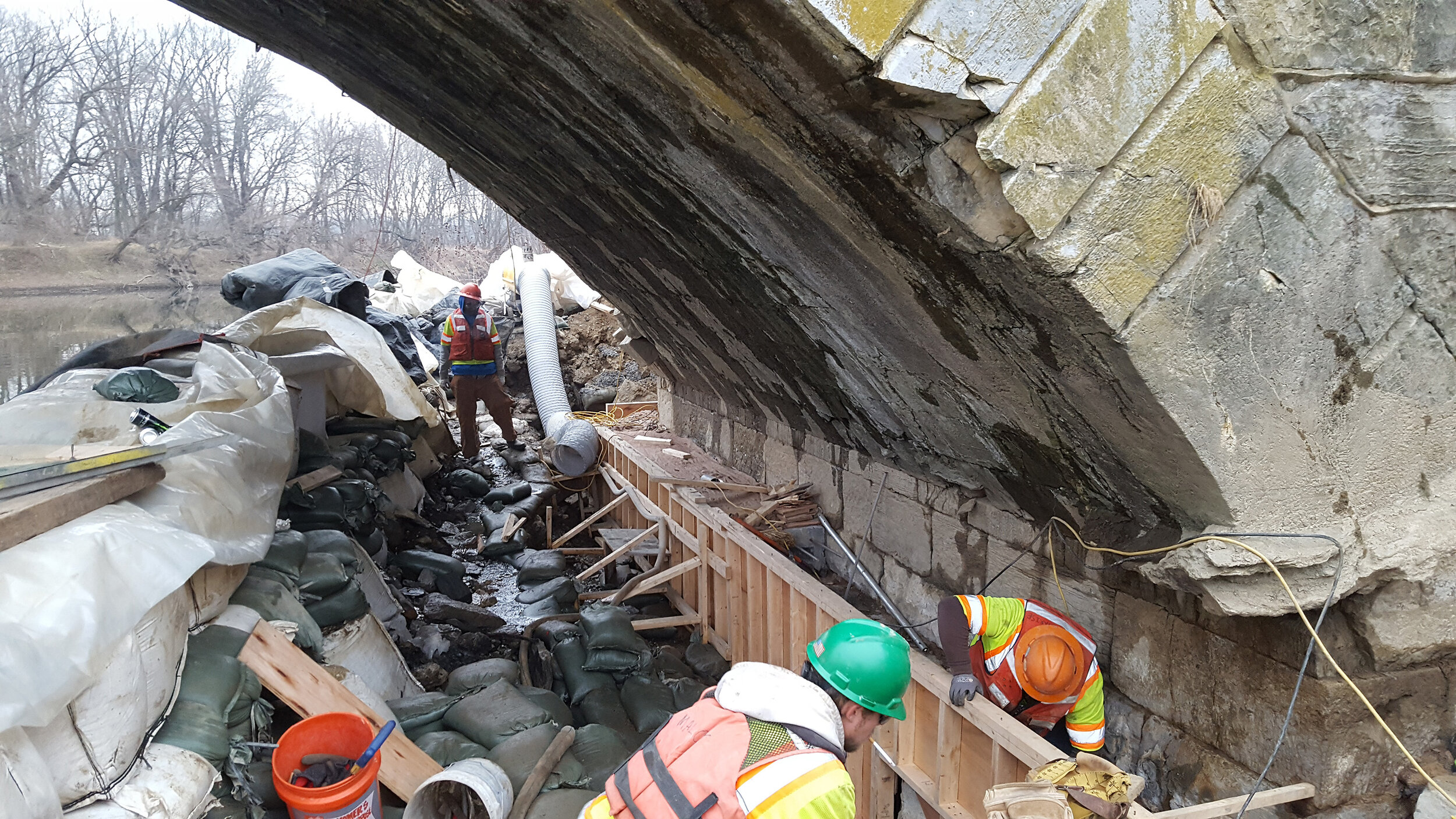
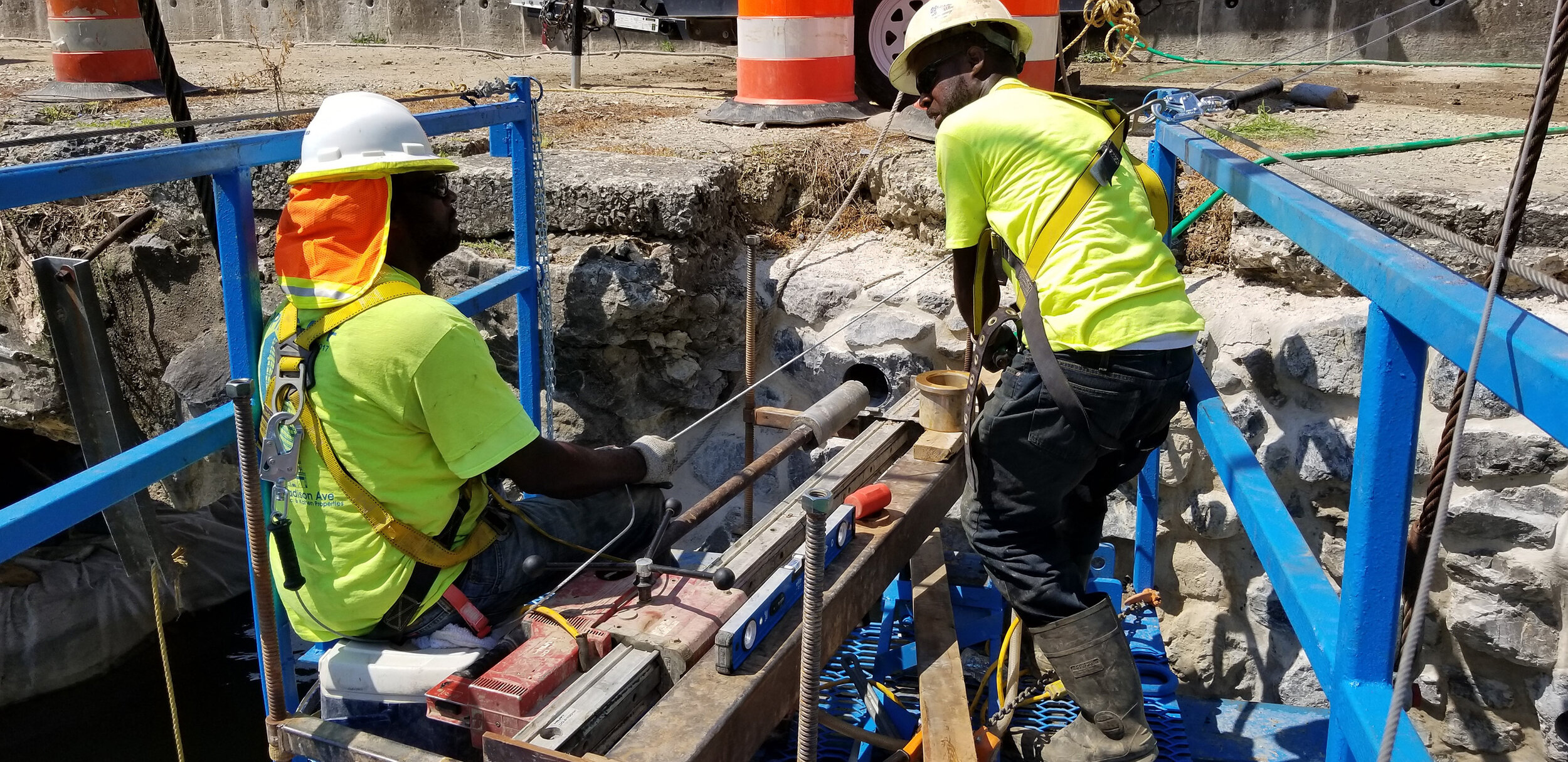
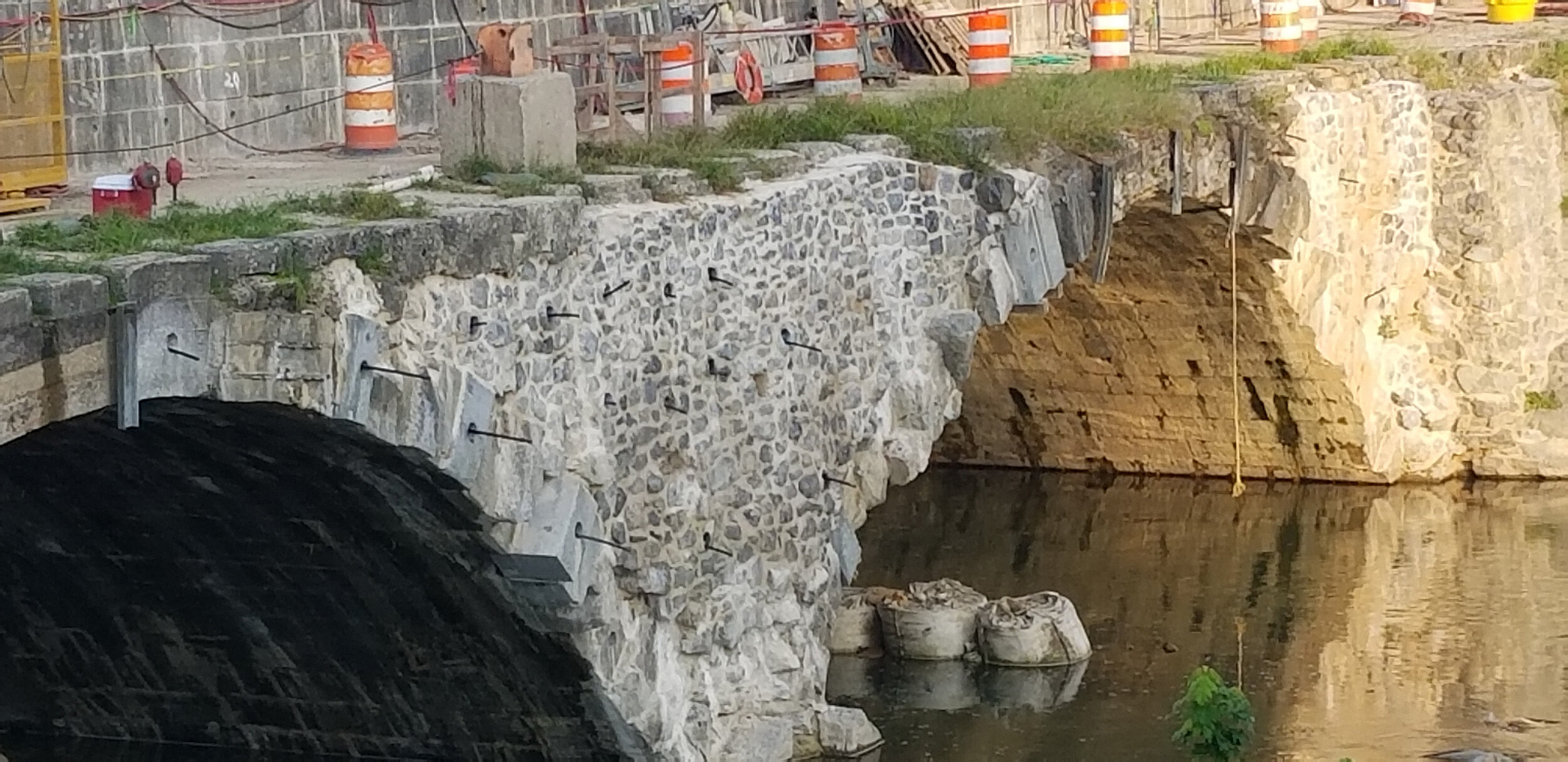
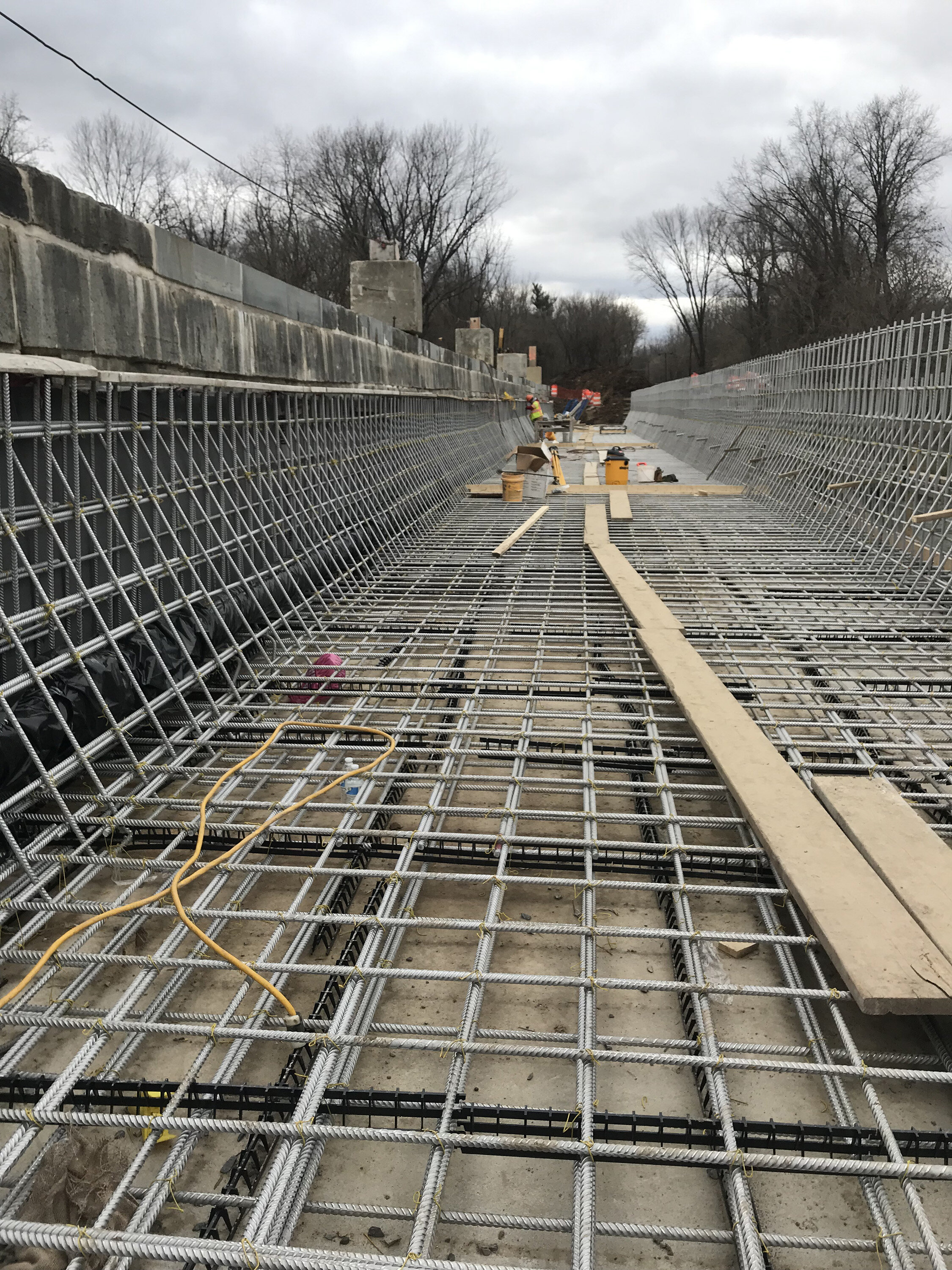


McMullan Principal Douglas E. Bond, PE, SE and McMullan Senior Structural Engineer Sze Patrum, PE at SEA-MW’s 2021 Excellence in Structural Engineering Event in the District Architecture Center (DAC).
With restoration of water in the aqueduct, this repair and rehabilitation project now allows visitors to ride a boat across the historic Conococheague Aqueduct during the summer months.
McMullan’s project management and engineering team comprised Principals Douglas E. Bond, PE, SE and Denis McMullan, PE with Project Structural Engineer Rebecca Biskaduros, PE. Other teaming partners included Peck, Peck & Associates; JMT; and Corman Kokosing.
(Completed Project Images Credit - Geoff Livingston Photography)
#thankyou #mcmullan #structuralengineers #structuralengineering #wosb #awards #excellence #seamw
McMullan Officially Joins the SE 2050 Commitment!
Since the early days of our firm and driven by Founding Principal Denis McMullan’s personal commitment, McMullan has always sought to provide structural engineering solutions that utilize the maximum use of recovered and in-place structural materials. Our diverse and extensive experience includes facility designs that make maximum use of recovered structural materials with high regional material content. Furthermore, our specifications for concrete, steel, and masonry are tailored to require use of high recycled content material and give preference to wood products made from forests certified by an FSC-accredited certification body.
Most of McMullan’s projects are compliant with LEED guidelines for certification as well as prevailing green building design and construction codes, including those for new buildings, alterations/additions, renovations, rehabilitations, deteriorated concrete structure repairs, and adaptive reuses of structures. Plus, McMullan has also spearheaded structural engineering designs for net zero energy buildings.
Therefore, McMullan Principals Colleen Nasta, PE and Doug Bond, PE, SE are excited to announce that McMullan has officially joined the SE 2050 Commitment in response to the SE 2050 Challenge which states: “All structural engineers shall understand, reduce and ultimately eliminate embodied carbon in their projects by 2050.”
#SE2050commitment #SE2050 #earthday2021 #earthday #netzero #mcmullan #structuralengineers #structuralengineering #wosb #wosbcertified
We're Hiring: Structural Engineers
We’re looking for structural engineers with 0-3 years experience, a degree in Civil Engineering from an accredited US institution, and the ability to be cleared to work on projects that require US citizenship or permanent resident status. University classes in concrete and steel design required and the ability to bring creative approaches to solving engineering challenges is a must. If you meet these criteria, then send your resume today!
McMullan Celebrates Doug Bond, PE, SE — 25th Anniversary
#thankyou #mcmullan #structuralengineers #structuralengineering #wosb #25years #congratulations




